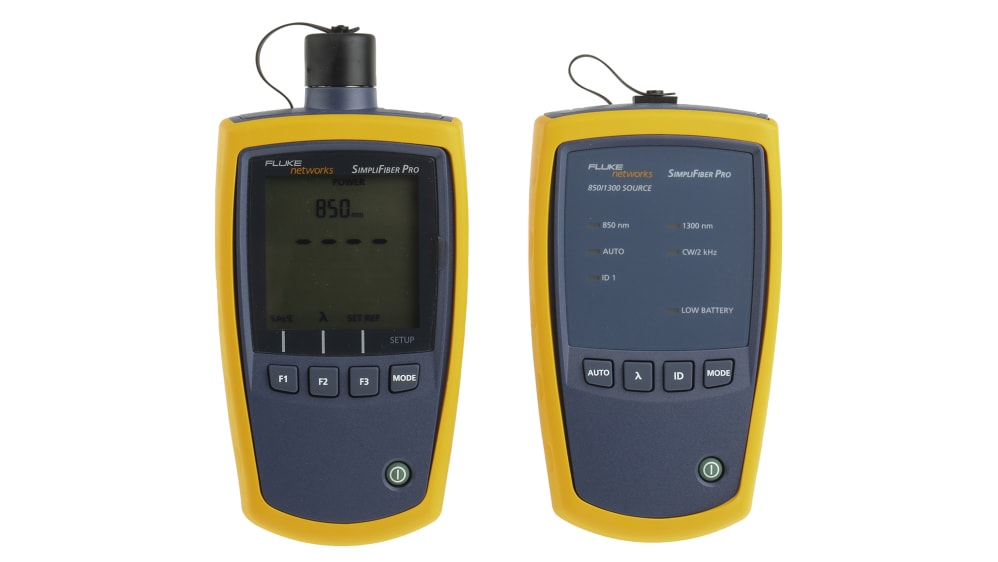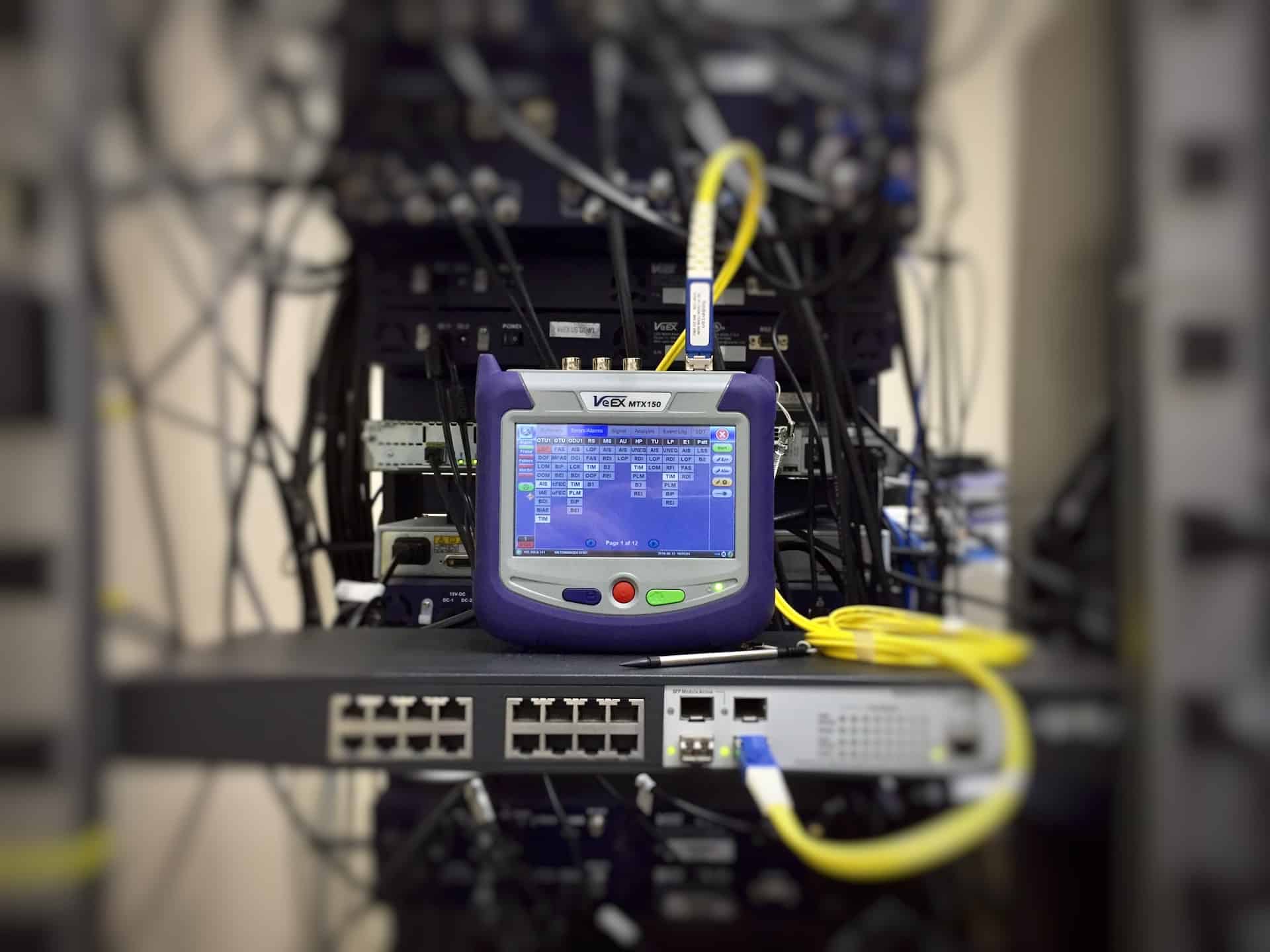Professionals work with optical fibre testing equipment to maintain stable data transmission.
Professionals work with optical fibre testing equipment to maintain stable data transmission.
Blog Article
Discover the Value of Optical Fiber Screening in Modern Telecommunications
In the world of contemporary telecoms, the value of optical fiber screening can not be overstated, as it functions as the backbone for ensuring network integrity and efficiency. By executing routine screening protocols, operators can preemptively determine possible problems such as signal deterioration, thus guarding versus disruptions that might verify costly. Advanced strategies like Optical Time-Domain Reflectometry play a crucial function in this procedure, yet numerous might ignore the more comprehensive effects of these practices. What are the particular advantages that routine screening offers, and exactly how might it form the future landscape of telecoms?

Recognizing Optical Fibre Screening
Optical fibre screening is a vital process in telecommunications that makes certain the stability and efficiency of fibre optic networks. This testing includes a series of treatments made to examine the physical and useful features of optical fibres - optical fibre testing equipment. Key specifications analyzed include optical power loss, data transfer ability, and mistake location, which are essential for keeping high-grade interaction links
The screening procedure normally involves the use of specific devices such as Optical Time-Domain Reflectometers (OTDR) and Optical Power Meters. OTDRs are used to identify and define mistakes, mates, and ports within the fibre, while power meters measure the transmitted light signal stamina to establish performance.
In addition, screening is carried out at numerous stages, including during installation, maintenance, and troubleshooting, to make sure that the network meets market standards and functional requirements. Conformity with standards set by companies like the International Telecommunication Union (ITU) and the Telecoms Sector Organization (TIA) is vital.
Advantages of Normal Evaluating
Regular testing of optical fibres yields countless advantages that significantly enhance network reliability and performance. One of the key advantages is the very early discovery of prospective issues, such as breaks or deterioration in the fiber, which can bring about costly downtime if left unaddressed (optical fibre testing equipment). By determining these issues proactively, telecommunications providers can minimize service interruptions and ensure consistent connection for their consumers
In addition, regular screening aids to preserve the stability of signal top quality. As optical fibers age, their efficiency can be affected by elements such as ecological problems and physical tension. Regular evaluations allow for the monitoring of signal loss and overall transmission efficiency, making certain that the network operates at ideal levels.
One more substantial advantage is compliance with sector criteria. Regular testing sustains adherence to regulatory requirements, consequently mitigating legal and monetary threats related to non-compliance. In addition, it improves the total life-span of the fibre facilities by assisting in prompt repair and maintenance.

Typical Checking Approaches
Examining optical fibres utilizes various approaches to make certain the integrity and performance of telecoms networks. Among one of the most usual strategies is Optical Time Domain Reflectometry (OTDR), which evaluates the entire length of the fibre by sending a pulse of light and gauging the reflections caused by flaws or breaks. This method provides detailed info regarding the place and severity of mistakes.
Another common approach is making use of Optical Power Meters, which measure the quantity of light transmitted with the fiber. This method helps determine the loss of signal toughness, making certain that it satisfies market standards. Additionally, Visual Fault Locators (VFL) are utilized to determine breaks or serious bends in the fiber by predicting a noticeable laser light right into the cable.
Insertion loss screening is additionally vital, as it quantifies the loss of signal power arising from connections and mates within the network. The use of Polarization Mode Dispersion (PMD) screening analyzes the influence click now of fibre features on signal stability.
Each of these techniques plays an important role in preserving the efficiency and reliability of optical fiber networks, ultimately adding to smooth telecommunications procedures.
Effect on Network Efficiency
The honesty and efficiency of optical fiber networks straight influence total network efficiency. In modern-day telecommunications, the performance of information transmission depends greatly on the high quality of the optical fibres made use of. Any kind of deterioration in the fibre's problem-- whether because of physical damages, contamination, or excessive bending-- can result in boosted attenuation and signal loss, dramatically affecting information integrity and speed.
Regular optical fiber screening is important to identify and remedy prospective problems before they show up as network failures or downturns. Techniques such as Optical Time Domain Reflectometry (OTDR) and insertion loss testing allow specialists to gauge the efficiency of fibre web links precisely. These examinations not only evaluate the physical condition of the fibers but likewise guarantee conformity with sector standards, thus guarding the network's integrity.
In addition, a well-maintained optical fibre network contributes to reduced operational expenses and boosted consumer contentment, as end-users experience less disturbances and greater information rates. Eventually, the focus on strenuous optical over here fiber screening techniques works as a cornerstone for maintaining robust telecoms facilities, making certain that company can satisfy the growing needs for bandwidth and connectivity in today's digital age.
Future Patterns in Evaluating
As we look ahead, advancements in modern technology are poised to reshape optical fibre testing in telecommunications. The increase of automation and expert system (AI) is anticipated to improve the effectiveness and precision of screening processes. Automated testing systems can conduct detailed assessments with marginal human intervention, dramatically reducing the capacity for errors and quickening have a peek at these guys time-to-deployment.
Furthermore, the assimilation of maker understanding algorithms will enable anticipating maintenance, allowing network carriers to predict potential problems prior to they escalate into failures. This aggressive technique not just boosts network dependability but likewise maximizes functional expenses.
An additional emerging pattern is the development of portable testing tools that supply real-time analysis - ofda. These tools will empower technicians to do on-site diagnostics swiftly, facilitating quicker resolutions and improving solution top quality
The growth of 5G networks even more demands the evolution of testing techniques. As transmission capacity demands increase, conventional testing strategies may no more suffice. Innovative solutions such as optical time-domain reflectometry (OTDR) and advanced spectral analysis will become important in making sure the honesty and efficiency of high-speed links.

Verdict
To conclude, optical fiber screening is essential for making sure the integrity and reliability of modern telecoms networks. Regular testing techniques not just help recognize prospective concerns such as signal loss and mistakes yet additionally add to boosted network efficiency and customer complete satisfaction. As the need for smooth connectivity continues to grow, the fostering of innovative testing approaches will certainly play a crucial function in maintaining top notch network standards and sustaining the advancing landscape of telecommunications.
Report this page